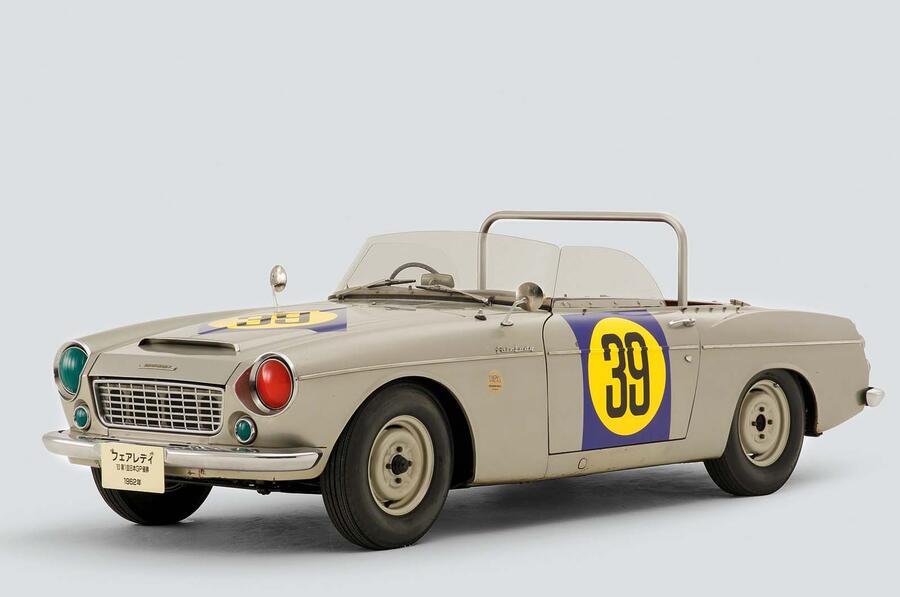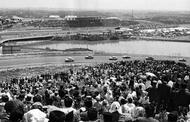Doing something for the first time is rarely easy, and especially not when those around you are experienced at it. Have a little sympathy, then, for the plight of the Japan Automobile Sports Association (Jasa) in May 1963, as it hosted the burgeoning nation’s first international grand prix meeting.
The stage was splendid Suzuka, opened just eight months prior. No expense had been spared by Honda in the venue’s construction, it being primarily intended as a proving ground for the manufacturer’s motorcycles.
However, as Autocar put it: “Despite excellent amenities, an interesting field of international drivers and cars and efficient pre-race planning, there was little to attract a spectator back.â€
You see, while each day’s top-billing sports car race ran flawlessly (in fact, they were “near carbon copies†that offered “little excitementâ€, with Lotus 23 drivers filling both podiums), the support races were absolutely chaotic.
Enjoy full access to the complete Autocar archive at themagazineshop.com
We explained: “There were no efforts during scrutineering to see that the cars complied with [the FIA’s] regulations. No notice was taken of cars normally fitted with three-speed gearboxes which resplendently boasted four speeds.
Other cars had dual electric petrol pumps supplementing their mechanical ones. Several cars shed bumpers and grilles or changed windscreens after scrutineering.â€
Team representatives’ loud protests won them reinspections, but Jasa still wasn’t thorough. And then when it became apparent that some Japanese manufacturers had homologated “all sorts of optional gear and axle ratiosâ€, precluding fair comparisons, it announced that no protests would be accepted except in respect of weight and capacity – despite Hillman having previously been told that it couldn’t enter the commercially available twin-carb version of its Minx.
Further still, one of the British drivers mentioned that nobody had asked to see a medical certificate or international competition licence. In fact, we heard that at least two drivers lacked the latter and one had never even raced on a track!
This may explain the “appalling carnage rate†in the touring car field: 23 of the 100 were written off in practice and a similar number in the races, and many drivers complained of being forced off.
The sub-1300cc GT race was hotly contested between five cars but rather spoiled, first on lap 10 by one taking the hairpin on its roof (“did she fall or was she pushed?â€), then the winning Austin-Healey being disqualified for an undersized screen, suspiciously to the benefit of a well-known local motorbike racer.

Less contentious, if not entirely so, after “all sorts of remarkable goodies had been added to the homologation certificate just weeks beforeâ€, was a Datsun Fairlady’s win over Triumphs and MGs in the 1300-2500cc GT contest.
The day ended “shambolically†with the 1300-1600cc touring car race. Vauxhall Victor driver Soichi Sakai started swerving down the main straight, more severely lap after lap, to the point that the Toyota Corona driver behind, “leaning on his horn in desperationâ€, “came very close to collecting a pit signalling manâ€.
The crowd howled in protest and at the finish “nearly lynched†the “rather crestfallen†Sakai, while his fellow podium finishers walked off in disgust. The stewards then disqualified him, but why hadn’t they done so during the race? It turned out they had been “otherwise engaged†– not that they had a black flag to wave anyway.
Amazingly, even stranger things happened on the second day. Jaguar E-Type driver Arthur Owen was so fast in the over-2500cc GT race that rivals requested his disqualification or retirement, as he’d been “invited only to race, not to winâ€! He refused, but Jasa gave the trophy to second-placed Tatsu Yokoyama anyway.
“It is doubtful if [the Brit’s] feelings were made any less bitter on being handed a trophy inscribed in Japanese ‘Best Performance by Guest’,†we quipped.
All’s well that ends well, though, and returning to Suzuka in 1964, we were delighted by “a tremendous improvement in the standard of driving and sportsmanshipâ€.
Â


